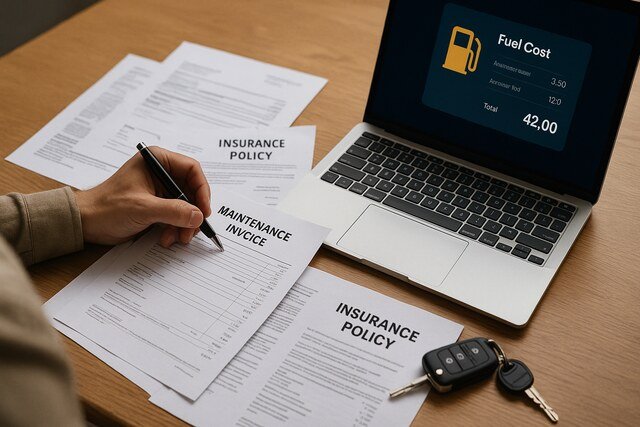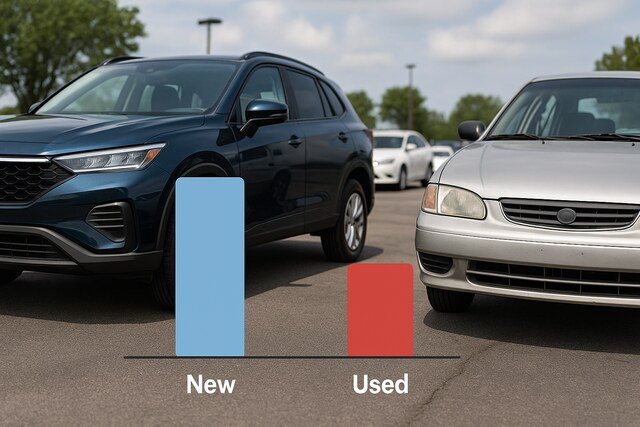Buying a car is an exciting milestone, but it’s also one of the biggest financial decisions most people face. Determining how much car you can afford based on your salary requires more than guessing what monthly payment “feels right.” It involves a careful evaluation of your income, debt, savings goals, and long-term financial stability. The goal isn’t just to qualify for a loan it’s to make a purchase that fits your lifestyle without straining your finances. In this comprehensive guide, we’ll walk through the smart financial steps, ratios, and calculations that reveal the true answer to “How much car can I afford based on salary?”
Evaluate Your Monthly Income and Budget
The foundation of determining car affordability begins with understanding your monthly income and spending pattern. You need to identify how much money comes in after taxes and deductions this is your net income or “take-home pay.” It’s the actual amount available to cover all living expenses, debts, and savings.
A good rule of thumb is to ensure your car-related costs don’t exceed 10–15% of your net monthly income. This includes your car loan, insurance, fuel, and maintenance. For instance, if your monthly net income is $5,000, your total car budget should ideally stay below $500–$750 per month. Sticking to this ratio helps maintain a healthy financial balance while still allowing for other obligations such as rent, groceries, and retirement savings.
To truly understand what you can afford, create a comprehensive personal budget. Track your fixed expenses like rent and insurance, and variable costs like entertainment or dining out. This gives you a realistic snapshot of how much flexibility you have for a car payment without sacrificing comfort or savings goals.
Calculate Your Net Income Correctly
Your gross income might make a car seem more affordable than it actually is. Always calculate affordability based on net income the money left after taxes, insurance, and retirement deductions. This figure reflects your real spending capacity. For salaried employees, this can be found on your pay stub. For freelancers or commission-based workers, take a monthly average of your after-tax earnings over several months to ensure accuracy.
Factor in Fixed and Variable Expenses
Your car payment doesn’t exist in isolation. Evaluate both fixed costs (rent, utilities, debt payments) and variable costs (entertainment, dining, travel) before determining your budget. Reducing discretionary expenses temporarily could open room for a better vehicle, while still maintaining overall stability. Prioritize sustainability buy a car that won’t force you to compromise your emergency savings or monthly necessities.
Apply the 20/4/10 Rule for Car Affordability
Financial experts often recommend the 20/4/10 rule to help buyers stay within safe limits. This rule simplifies complex calculations into a sustainable framework:
- Put down 20% of the car’s purchase price.
- Finance it for no more than four years.
- Keep total transportation costs under 10% of your monthly income.
This formula ensures that your car purchase supports long-term financial health rather than adding unnecessary debt. The down payment lowers the loan principal, the short loan term minimizes interest costs, and the 10% cap maintains budget control.
For example, if your take-home pay is $5,000 per month, you should spend no more than $500 per month on your car loan, insurance, fuel, and maintenance combined. Using these ratios keeps you from overextending yourself financially and ensures room for savings, debt reduction, and leisure spending.
| Monthly Income | 10% Transportation Budget | Maximum Monthly Payment | Recommended Car Price (20% Down) |
| $3,000 | $300 | $250–$275 | $12,000–$14,000 |
| $5,000 | $500 | $450–$475 | $20,000–$25,000 |
| $8,000 | $800 | $700–$750 | $35,000–$40,000 |
Understand the Importance of a Down Payment
The 20% down payment principle protects you from negative equity, which occurs when your car’s value drops faster than you repay the loan. This is especially critical with new cars, which can lose up to 25% of value in the first year. A down payment also lowers your interest expense and gives you better financing terms because lenders see you as a lower-risk borrower.
Keep the Loan Term Short
Many buyers are tempted by 72- or 84-month loans because they offer smaller monthly payments. However, longer terms mean paying far more interest over time and being stuck with a car that’s worth less than the remaining loan balance. A 48-month (4-year) loan ensures quicker equity build-up and healthier long-term finances.
Assess Additional Vehicle Ownership Costs

A common mistake among car buyers is focusing only on the loan payment while ignoring ownership costs. A vehicle’s true cost includes insurance, maintenance, fuel, repairs, registration fees, and depreciation. These costs vary depending on the vehicle type, model, and how much you drive annually.
For example, a compact sedan with good fuel economy might cost $8,000 per year to operate, while a luxury SUV could exceed $12,000 annually once insurance and maintenance are added. Evaluating total ownership costs prevents future budget strain and gives you a realistic idea of ongoing financial responsibility.
You can use online calculators to estimate yearly costs for insurance, fuel, and maintenance. Understanding these expenses helps you choose a car that not only fits your salary but also aligns with your financial lifestyle.
Estimate Annual Ownership Expenses
On average, insurance accounts for 15–20% of total vehicle costs, fuel about 25%, and maintenance and repairs around 10–15%. Compact cars and hybrids tend to be cheaper to maintain, while sports or luxury models incur higher costs. Consider these factors when comparing models what seems affordable upfront might become expensive long-term.
Choose a Vehicle Type That Matches Your Lifestyle
Buying a car that complements your driving habits and location reduces ownership costs. For instance, someone commuting long distances should prioritize fuel-efficient sedans or hybrids, while those living in rural or snowy areas may need an SUV with all-wheel drive. Matching vehicle features to your environment ensures long-term practicality and financial efficiency.
Check Your Credit Score and Loan Options
Your credit score significantly influences how much car you can afford because it determines your loan interest rate. A higher score means lower interest and total loan cost, while a poor score can increase your payment dramatically.
Before applying for a loan, obtain your credit report from the major bureaus (Equifax, Experian, TransUnion). Correct any errors, pay down revolving balances, and avoid taking new credit right before financing. Even a 50-point improvement in your credit score can lead to better loan terms, saving you thousands.
Compare offers from banks, credit unions, and dealerships. Credit unions often provide lower interest rates and more flexible approval standards. Don’t rely solely on dealer financing; shopping around ensures you secure the most favorable deal.
Understand Interest Rate Impact
Interest rates drastically affect affordability. On a $25,000 car loan over four years, a 5% rate equals roughly $2,600 in total interest, whereas a 9% rate costs over $4,900. That’s a $2,300 difference just from your credit profile. This highlights why improving your score before purchase is one of the smartest financial moves you can make.
Consider Pre-Approval Before Shopping
A loan pre-approval gives you a clear budget range before visiting dealerships. It acts like a spending ceiling, preventing emotional overspending or pressure to buy more expensive models. Pre-approval also signals to sellers that you’re a serious buyer, often strengthening your negotiation position.
Compare New vs. Used Car Affordability

Another key decision in determining affordability is choosing between new and used vehicles. New cars come with warranties, the latest features, and a sense of reliability but they depreciate quickly, losing thousands in value within the first year. Used cars are more budget-friendly upfront and experience slower depreciation, but may require more maintenance.
For buyers on moderate salaries, a certified pre-owned (CPO) vehicle provides an ideal balance. These cars are lightly used, thoroughly inspected, and backed by manufacturer warranties, offering peace of mind at a lower price.
Evaluate Depreciation and Resale Value
Depreciation is the hidden cost most buyers overlook. Some cars lose 50% of their value in five years, while others retain strong resale value. Brands like Toyota, Honda, and Subaru consistently rank high in resale value, meaning you recover more of your investment if you sell later.
Inspect and Verify Used Vehicles Carefully
If you choose a used car, protect yourself by obtaining a vehicle history report through services like Carfax or AutoCheck. Have the car inspected by a trusted mechanic before purchase. This ensures there are no hidden issues like prior accidents, frame damage, or odometer fraud all of which can lead to unexpected costs.
Balance Debt-to-Income Ratio Before Purchase
Your Debt-to-Income (DTI) ratio is another key factor in affordability. Lenders use this metric to evaluate whether you can handle additional debt. It’s calculated by dividing your total monthly debt payments (including your potential car payment) by your gross monthly income. A DTI under 36% is generally considered healthy and signals financial stability.
If your DTI is high, paying off small debts like credit cards or personal loans can improve your borrowing potential. A low DTI not only increases your loan approval odds but also keeps your finances manageable after purchase.
Use Debt Reduction Strategies
Lowering your DTI ratio can be achieved by paying down high-interest debts, consolidating loans, or boosting income temporarily. For instance, paying off a $200 credit card balance could make room for a car payment without raising your total debt ratio.
Maintain Healthy Savings Reserves
Before buying a car, ensure you have an emergency fund equal to at least three to six months of expenses. This safety net prevents you from missing payments in case of job loss or emergencies. Never use your emergency savings as a down payment doing so can leave you financially vulnerable.
Make a Smart Purchase Decision and Plan for the Future
The final step is executing your purchase strategically. Once you know your budget, loan eligibility, and true ownership costs, focus on finding the best car for your needs not your emotions. Compare models, request quotes from multiple dealers, and negotiate confidently. Stick to your predetermined budget even if the dealership tempts you with upgrades or financing incentives.
After buying your car, manage ownership responsibly. Make payments on time, follow a scheduled maintenance plan, and track expenses monthly. Consider refinancing your loan after a year if your credit improves it can lower your rate and monthly payment.
Reevaluate Car Expenses Annually
Your financial situation and vehicle costs may change over time. Review your car-related expenses annually including insurance rates, maintenance costs, and fuel spending to ensure they still align with your income. Adjust or refinance if needed to keep your financial plan on track.
Prepare for Depreciation and Replacement
Since cars lose value over time, set aside money monthly into a vehicle replacement fund. When it’s time to upgrade, you’ll already have a financial head start without depending on loans. This proactive step ensures long-term mobility and financial freedom.
Conclusion
Determining how much car you can afford based on salary isn’t just about finding a loan that fits it’s about aligning your car purchase with your broader financial goals. By following the 20/4/10 rule, assessing total ownership costs, maintaining a healthy credit score, and balancing your debt-to-income ratio, you can make a confident and financially sound decision. Remember, a car should be a tool for freedom and convenience, not a burden on your finances. Plan wisely, purchase responsibly, and drive confidently knowing you made the best financial choice for your future.
Explore more insightful and valuable content on our blog journalingtechniques! Stay updated with helpful tips, expert advice, and in-depth articles that enhance your knowledge.
FAQ’s
Keep all car-related costs loan, insurance, fuel, and maintenance under 10–15% of your take-home pay for long-term financial safety.
Leasing may offer lower monthly payments, but buying typically provides better long-term value, especially if you keep your car for several years.
Aim for at least a 20% down payment plus extra for registration, taxes, and insurance. This reduces interest and prevents negative equity.
A certified pre-owned car is ideal it balances affordability, reliability, and depreciation control.
Improve your credit score, increase your down payment, or opt for a lower-priced model to minimize loan costs.
A 36–48 month term is ideal. It keeps total interest low and helps you own the car outright sooner.

